Have you ever wanted to know things about your website traffic that Google Analytics doesn’t tell you? If so, then you may need to set up Google Analytics custom dimensions.
With the help of custom dimensions, you can collect and analyze information that’s especially important to your business.
In this article, we’ll explain everything you need to know about Google Analytics’ custom dimensions. By the end of the post, you’ll know what custom dimensions are, how to configure them in WordPress, and how can you view custom dimension reports in WordPress and Analytics.
Let’s kick things off with a brief look at…
What Are Custom Dimensions in Google Analytics?
Custom dimensions in Google Analytics are dimensions that Google doesn’t track automatically, so you have to set them up and add them to your standard reports or create your own custom reports. A dimension is simply an additional piece of information that is added to a metric to give you a better level of understanding.
A metric is a numerical measurement or statistic, like the number of sessions, number of visitors, or number of purchases. By themselves, these numbers often don’t tell you what you want to know. However, when you add dimensions to your metrics you get more details about users’ behavior.
For example, if you sell products on an eCommerce site, you might want to track a dimension called product name. Once you set it up, Google Analytics can track the “product name” dimension for every purchase event. Then, you’ll be able to track not only the number of transactions on your site but exactly how many of each product you’re selling.
Why Set Up Google Analytics Custom Dimensions?
You should set up Google Analytics custom dimensions when you want to analyze data that isn’t collected in default reports. Every business and website has unique needs, and sometimes you need information that isn’t standard.
Google Analytics tracks some dimensions by default. For example gender, age, country, browser, source, medium, etc. But when you need more information to understand your audience, track your marketing efforts, or make informed decisions, then you need custom dimensions.
You can use custom dimensions to track just about anything, from logged-in user IDs to which authors perform the best or which post types are most popular.
Since this data isn’t automatically tracked, you’ll need to manually configure custom dimensions. Don’t know how? Here’s a step-by-step tutorial.
How to Set Up Google Analytics Custom Dimensions in WordPress
Just follow these steps, and you’ll be able to view custom dimensions reports in your WordPress dashboard in no time.
- Step 1: Install ExactMetrics and Dimensions Addon
- Step 2: Add Custom Dimensions to ExactMetrics
- Step 3: Set Up Custom Dimensions in Google Analytics
- View Reports in WordPress
- View Reports in Google Analytics
Step 1: Install ExactMetrics and Dimensions Addon
For the easiest way to set up custom dimensions on your WordPress website, you’ll need ExactMetrics. It’s the best premium WordPress Analytics plugin you can use today.
ExactMetrics lets you easily add Google Analytics to your WordPress site without the need for coding. And it’s more than just a plugin for viewing analytics data. ExactMetrics allows you to do much more like setting up custom dimensions reports with only a few mouse clicks.
So, the first thing you’ll need to do is get ExactMetrics Pro, because it offers advanced tracking features and extensions like the Dimensions Addon.
Once you’ve signed up and installed the plugin on your website, go ahead and activate the Dimensions Addon. For that, go to ExactMetrics from your WordPress dashboard and then click Addons. Navigate your way to Dimensions and click Install.
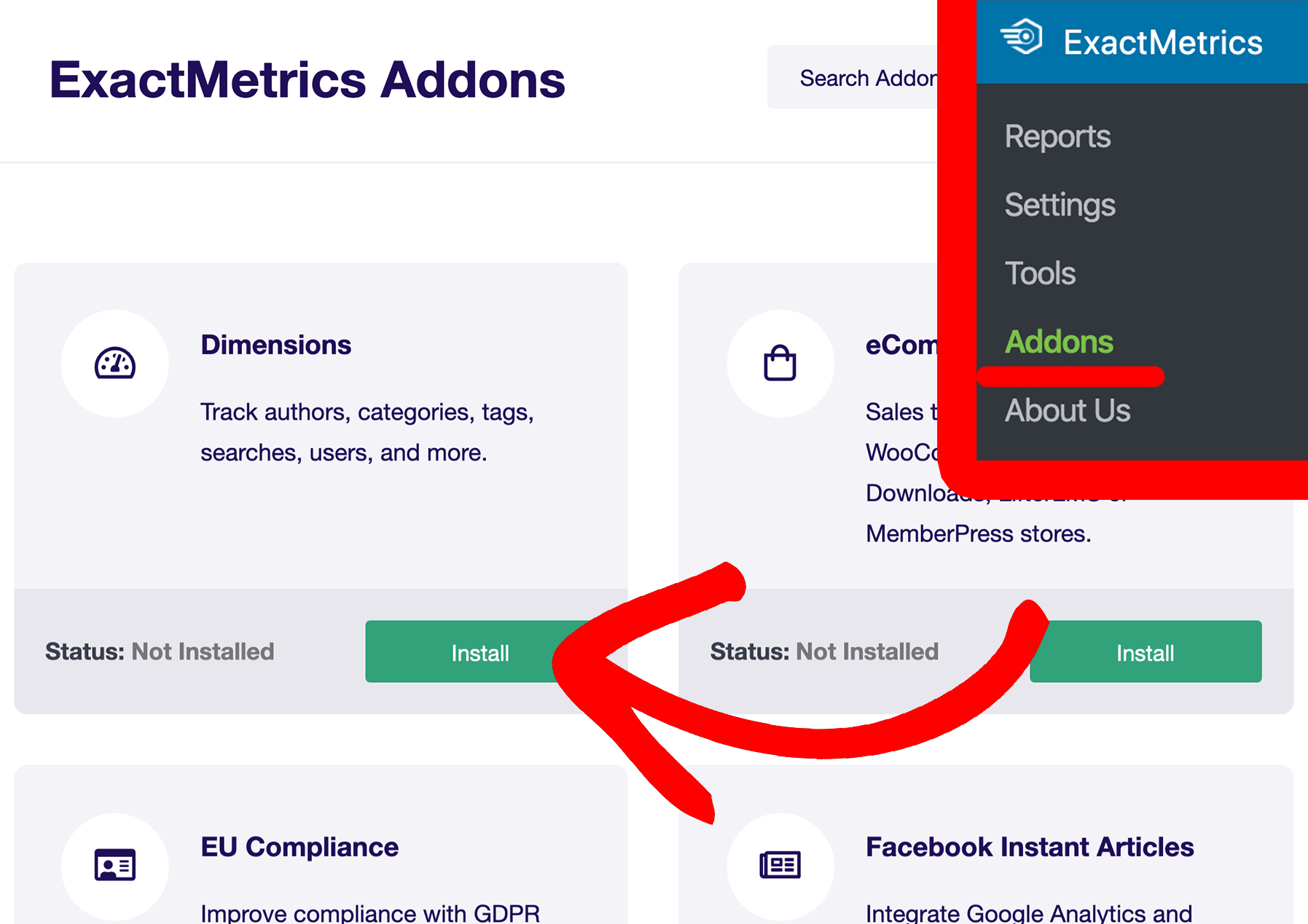
Step 2: Add Custom Dimensions to ExactMetrics
After setting up ExactMetrics and its Dimensions addon, the next step is to add your custom dimensions.
To do that, go to ExactMetrics » Settings and then select the Conversions tab from the top menu. Now, scroll down to Custom Dimensions.
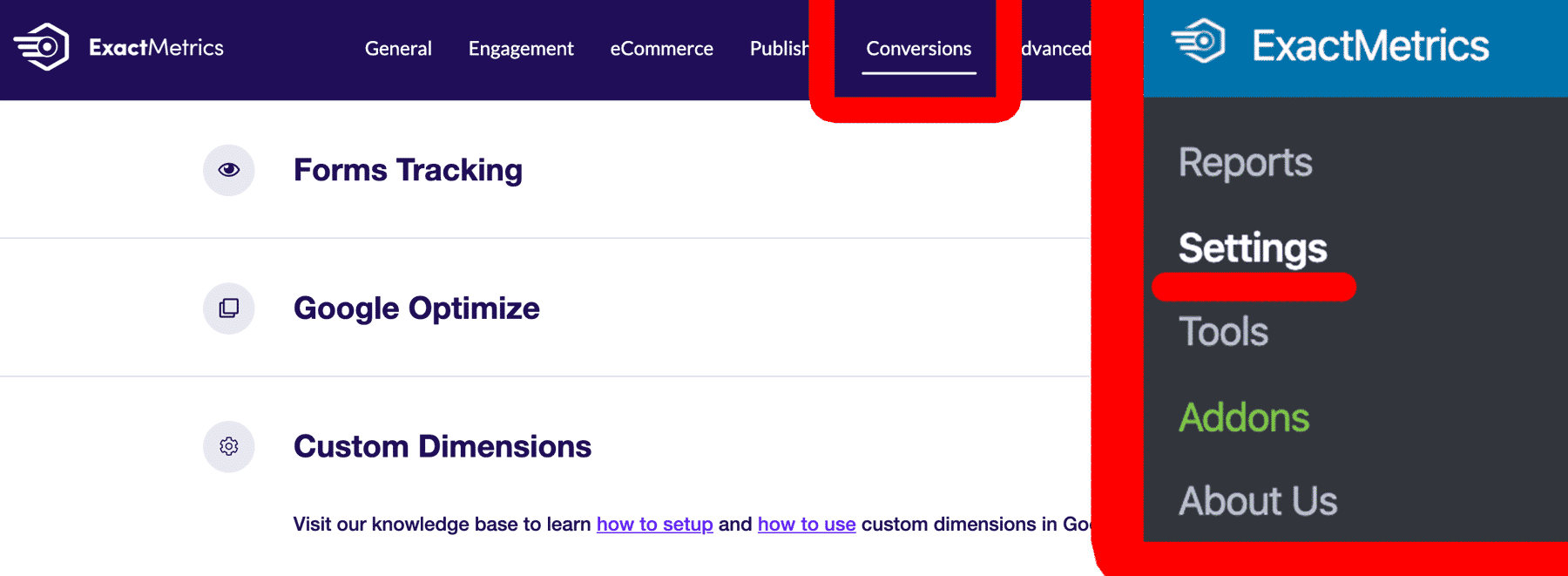
Here you’ll select the custom dimensions you want to track for your website. ExactMetrics supports tracking of the following custom dimensions:
- Logged in – This dimension tracks whether users are logged into your website or not. You can set up this custom dimension if you have an eCommerce store or a membership website and want to see how logged-in users and guests behave differently.
- User ID – If want to see what each logged-in user is doing on your website, then using User ID you can track their activities.
- Post type – You can see which post types are most popular amongst your visitors using this custom dimension, and focus on promoting that post type more to drive traffic and conversions.
- Author – This dimension is ideal for sites that have multiple authors. It helps you track the performance of each author’s reader views.
- Category – Measuring the popularity of different categories gives you insights into what visitors like. That way you can spend more money on marketing popular categories.
- Published at – Wondering what’s the best time to publish your content? Published at custom dimension helps you see when to push your posts and how old posts perform.
- Tags – Similar to categories, the Tags custom dimension also lets you track the popularity of different topics and subjects on your website.
- TruSEO Score – If you have All in One SEO (AIOSEO) plugin for SEO installed on your WordPress site, you can track the TruSEO score of each post and page in Google Analytics.
- Focus Keyphrase – Using the AIOSEO plugin, you can even see which focus keyphrase is generating traffic on your website by tracking it in Google Analytics.
To add any or all of these custom dimensions, and start tracking them, click on Add New Custom Dimension.
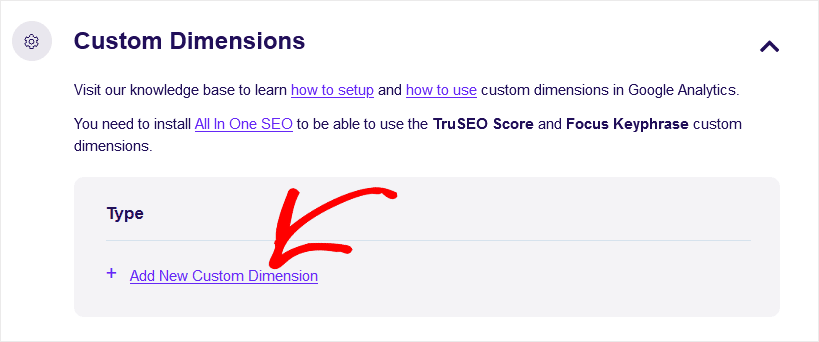
Then, you’ll be able to select each custom dimension to activate it, or delete it from the list.
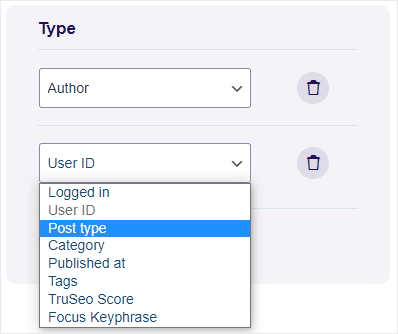
When you’ve selected all the custom dimensions you’d like to track, click the Save Changes button. Okay, you’re all done setting up your custom dimensions in Exact Metrics.
And now, there’s one more step. you’ll also need to make sure that your added custom dimensions are set up properly in your Google Analytics account.
Let’s find out how you can do that…
Step 3: Set Up Custom Dimensions in Google Analytics
Once you’ve successfully set up custom dimensions in ExactMetrics, you’ll need to make sure they’re set up correctly in Google Analytics.
The good news is that ExactMetrics will configure the custom dimensions shown in Step 2 automatically in your Google Analytics account. However, you should log into Google Analytics and confirm that your desired custom dimensions are enabled.
In order to see active custom dimensions in Google Analytics, log in and select the desired property, then go to the Admin area.
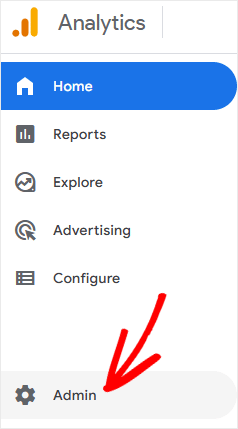
Now, you can click Custom definitions under the Property column.
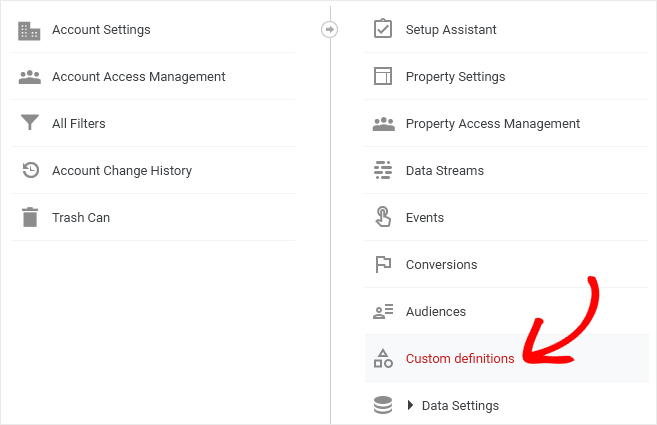
This opens up the Custom definitions screen, which displays a list of active Custom dimensions. If you previously installed ExactMetrics and the Dimensions addon from Step 2 above, you should see all of the custom dimensions you enabled in ExactMetrics.
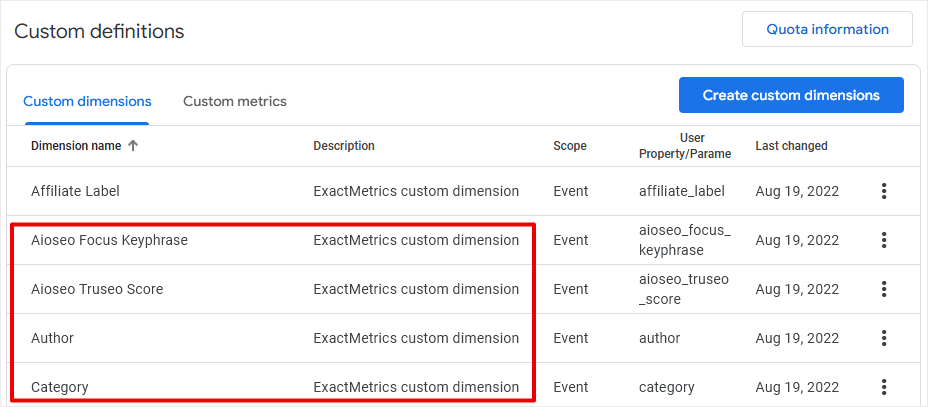
If this list is empty, or you don’t see the custom dimensions you turned on in ExactMetrics, go back to your WordPress dashboard. Click ExactMetrics » Settings and then click Reconnect ExactMetrics.
Congratulations!
You successfully added custom dimension tracking to your WordPress website. Now, let’s see how you can view that data in your reports.
How to View Custom Dimensions Reports in WordPress
You must be wondering… how do you view the information from your custom dimensions report in WordPress?
ExactMetrics shows all your important Google Analytics reports directly inside your dashboard. So, you can see the custom dimensions report at a glance without leaving your site.
To view your custom dimensions report, go to ExactMetrics » Reports » Dimensions. In this example, you can see the data for the custom dimensions Tags and Published at.
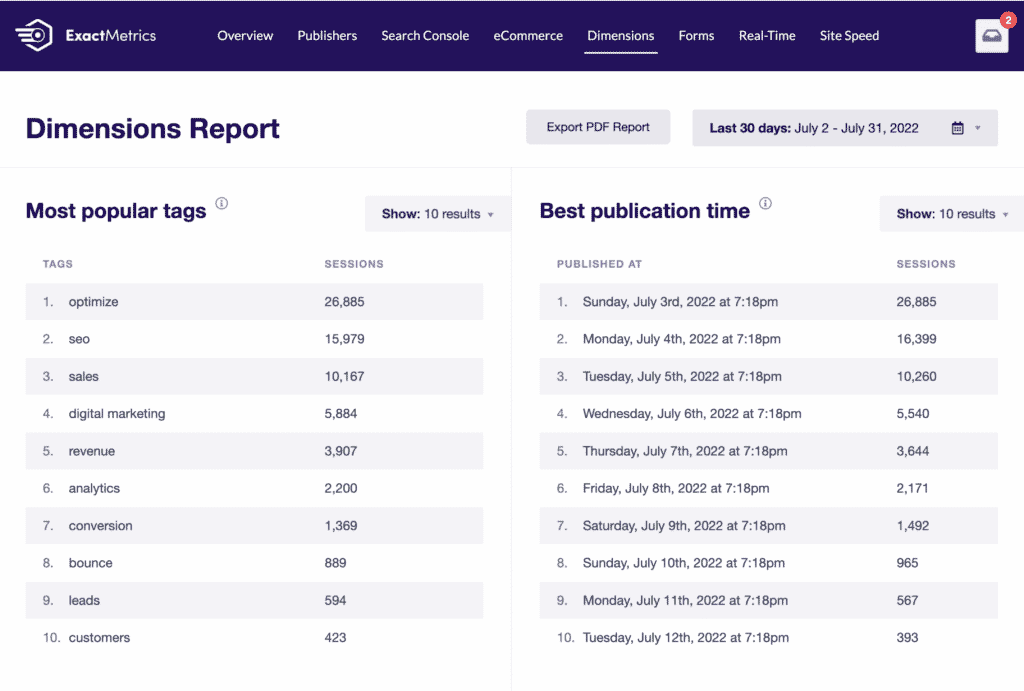
The custom dimensions report in ExactMetrics gives you a lot more data to help better understand your visitors.
But what if you want a more detailed look at your custom data? Let’s see how to create and view custom reports in Google Analytics….
How to View Custom Dimensions Reports in Google Analytics
Unfortunately, Google Analytics doesn’t offer a standard or automatic report to show you your custom dimensions data. You’ll have to add your custom dimension to an existing report, or you can follow our tutorial for creating custom reports.
To add your custom dimension to an existing report, head to your Google Analytics account and select the report you want to add your dimension to. For our example, we’ll add our custom dimension as a secondary dimension to our Pages and screens report. Navigate to Reports » Engagement » Pages and screens:
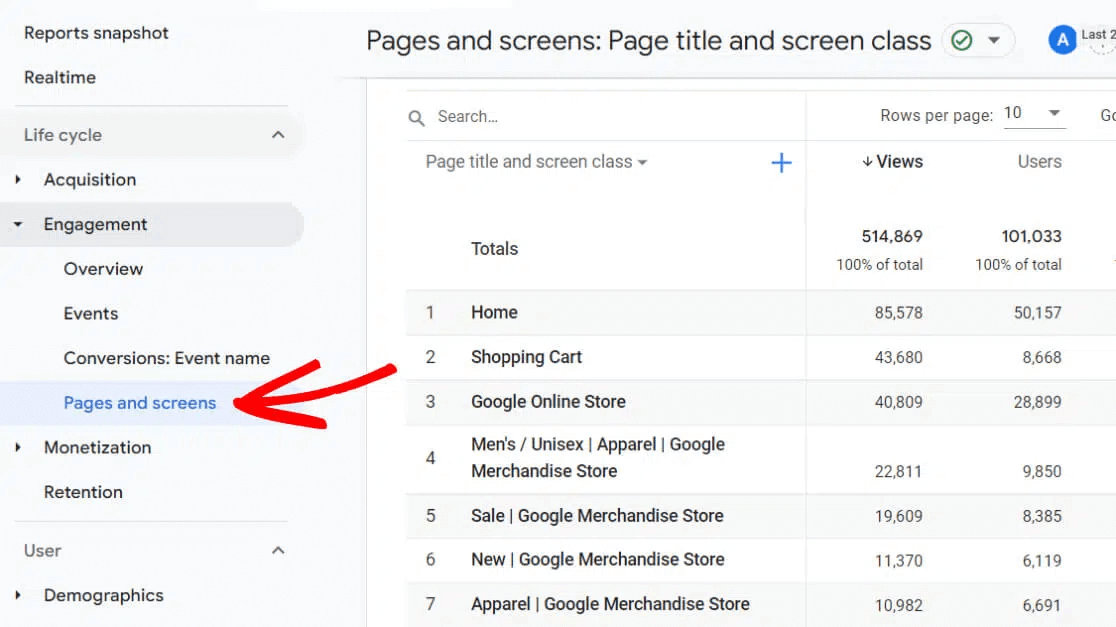
Now click the blue + icon next to the Page title and screen class:
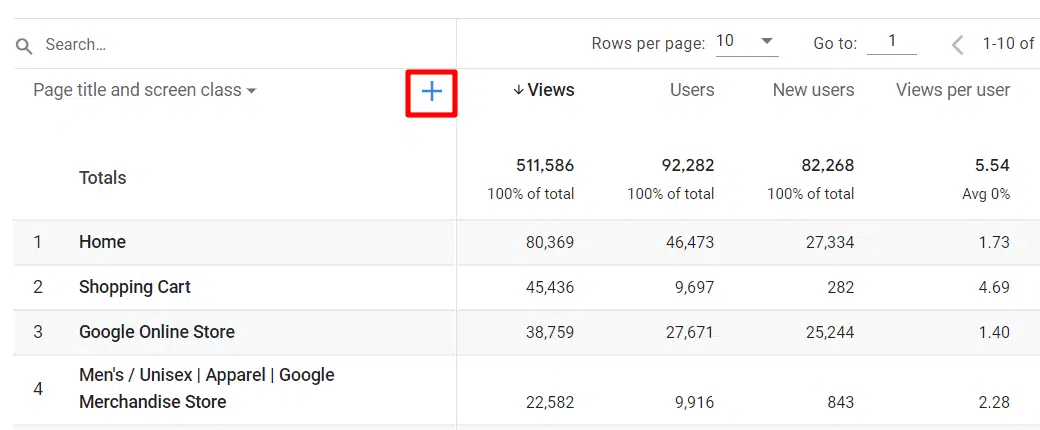
Here you can choose the custom dimension you want to add. We’ll add Author by clicking Custom (Event-scoped) » Author:
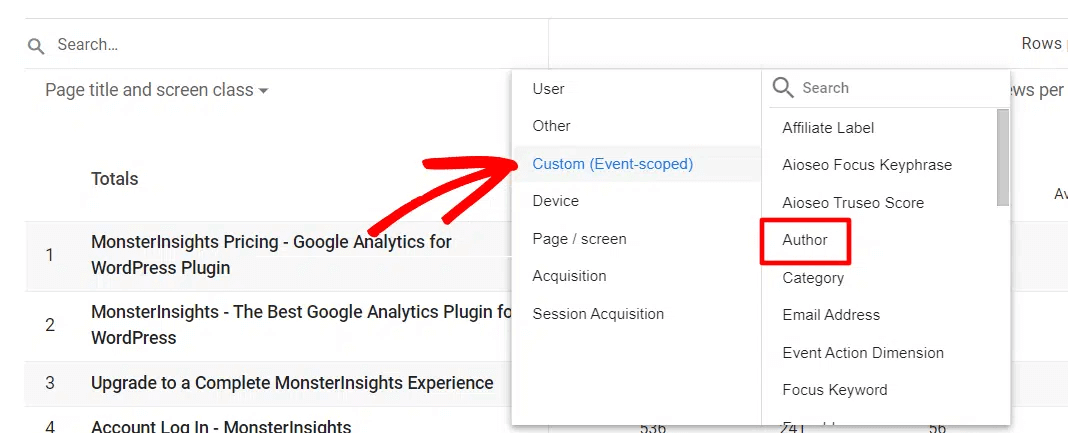
If you have the custom dimension for author set up from the previous steps, you’ll now see your page views with the author included in your report:
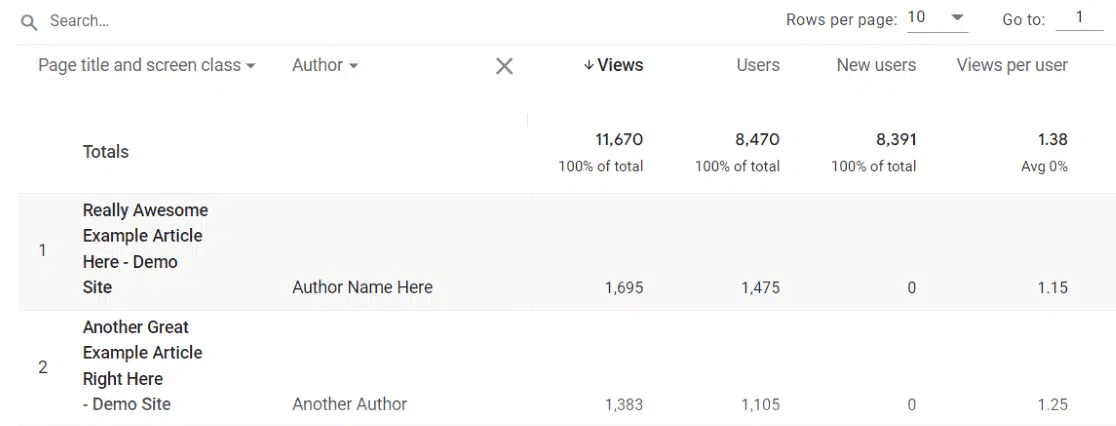
And that’s it! You can also add your custom dimension as a secondary dimension to any other standard reports in Google Analytics such as your landing pages report or traffic acquisition report.
You now have a great start on understanding and using custom dimensions. So, start thinking about how you can use this customized data to get deeper insights about your audience. That should help you improve their user experience, along with your site’s traffic and conversion numbers.
We hope you liked our beginner’s guide to Google Analytics’ custom dimensions. If you enjoyed reading this post, you might like this tutorial on how to track affiliate links in WordPress.
And don’t forget to follow us on Twitter and Facebook to stay updated on the latest Google Analytics tips and tools.


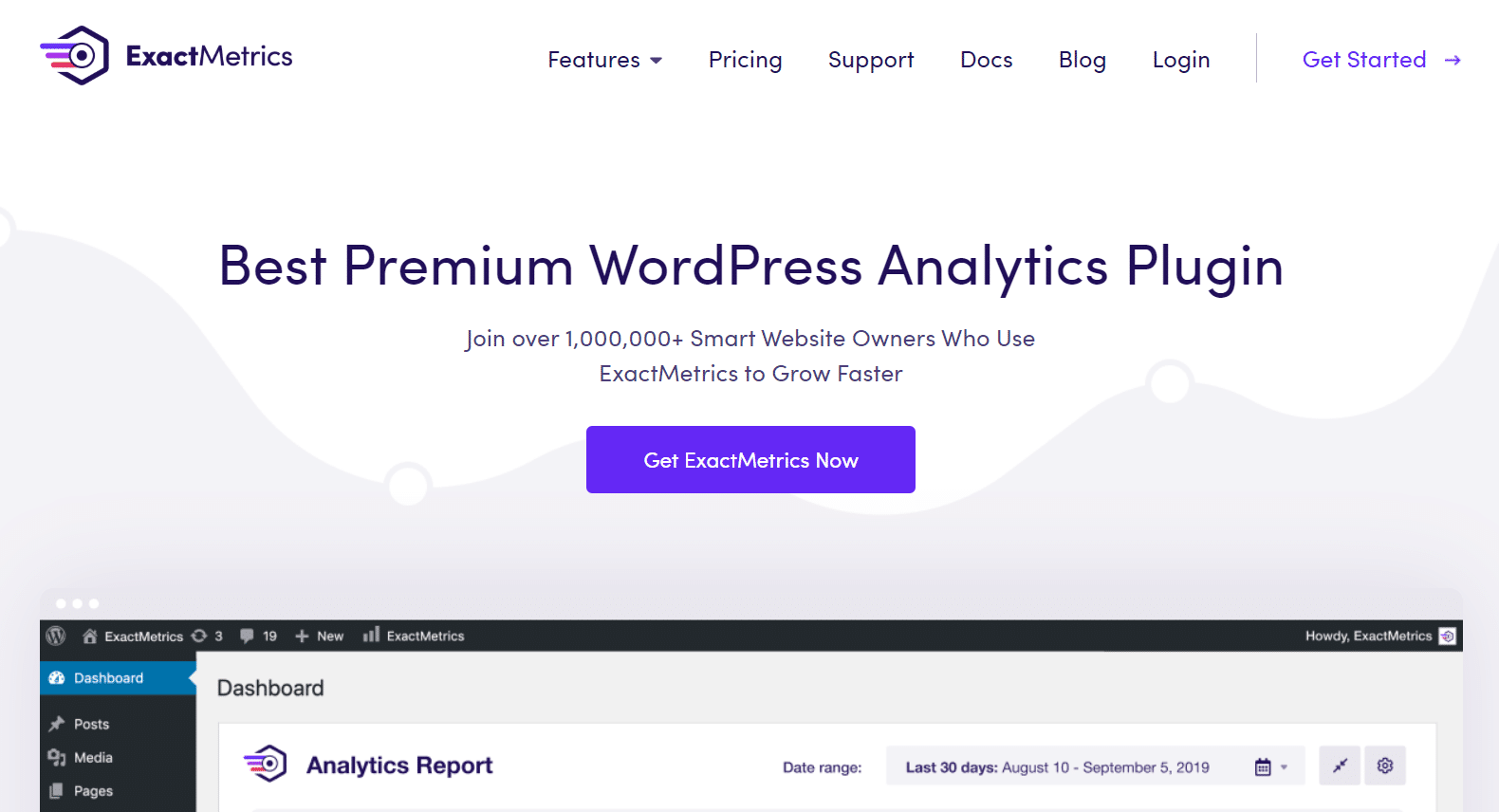
I’m going to try the Lite version. This is a lot of information I did not know I could use but some of it would be quite helpful – like best time of day to publish my articles. It has a lot of instructions and I will take time to try it out but these analytics make me nervous. I write articles that people might like to read – tracking various pieces of information,…not sure about that. Is there a beginners “group” somewhere that I could follow?
This is a very thorough post. For some of us that don’t have the Pro version, I’m glad you included an explanation of how to see a custom dimensions report on Google Analytics.
ExactMetrics is great tool and when paired with Analytics, it is really very helpful. This guide will surely help many peeps who are starting out with ExactMetrics.
Thanks for posting this! YAYYY!!!
This is a well-detailed article, but I am not considering using custom dimensions in Google Analytics now.
The default settings is still serving me pretty well.
Very useful. I’ve used Google analytics for a while but struggle to manage it
Thank you for sharing this extremely helpful tutorial. This made the job so much easier.
I’ve been using this plugin since I started my blogging journey on WordPress, I’m glad I got it!
ExactMetrics can make your life easier when working with advanced Google Analytics.
A very useful article! Any beginner can understand easily. Thank you & keep it up!
Thank you! We are just starting to dive into this subject and this was very helpful!
Thank you all for providing detailed instructions on how to install Custom Dimensions. Also, you all are brilliant for creating something as informative as Custom Dimensions.
WOW! never thought it could be that simple to analyze
I didn’t even know this existed. thank you!